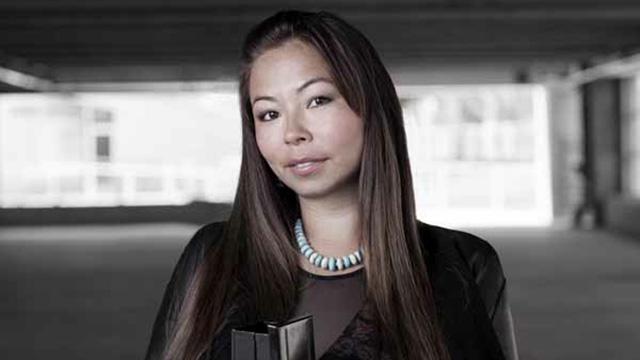Activist and photographer Matika Wilbur shared stories, songs, sorrow and hope with the Northwestern audience who attended her Jan. 26 lecture, “19 Lessons from Indian Roads.”
A woman of the Swinomish and Tulalip Tribes of the Pacific Northwest, Wilbur began Project 562 to create authentic images of contemporary indigenous people. The project name comes from the 562 U.S. tribes that were federally recognized in 2010 when Wilbur conceived the journey. Four tribes have been added since.
With each photograph Wilbur projected on screens around the auditorium, she shared intimate stories about her subjects, their identities and their tribes. She talked about her experience at the Dakota Access Pipeline protests, where she said dogs and water cannons were used on protestors. She saw silent marches, prayer processions and solidarity between different tribes.
She discussed injustices suffered by indigenous people, both historically and in modern times. With a photo of Raymond Mattz of the Yurok Tribe staring out into the audience, Wilbur explained how Mattz didn't want to smile in the picture because many of his teeth had been broken during his 19 arrests for fishing on the Klamath River in California. Mattz was among the first people to challenge the U.S. government for tribal fishing rights. He brought the case to the Supreme Court, and his tribe was granted half of the fish and game within their indigenous territory.
Wilbur said her project aims to replace the stereotypical 19th century pictures that crop up in web searches for "Native American," and to securely plant the authentic faces and stories of Native tribes in people's minds. She is motivated by a dream she had, in which native language, food and philosophy had not been erased.
She talked about the victory and the grief of traveling for three years and 250,000 miles in a van she dubbed The Big Girl. Her irresistible laugh filled the room as she recalled the day she accidentally set The Big Girl on fire while cooking bacon. She spoke of grandparents, aunties, activists, fashionistas and people who hold doctorates — persevering, thriving, culture-bearing people.
"I believe that my work is the answered prayers of my ancestors, as I walk the path they fought to pave," Wilbur wrote in her artist statement.

She spoke about being a certified teacher at Tulalip Heritage High School and about the pain of burying young native students who died by suicide. In 2012-13 in the U.S., the suicide rate was highest in the American Indian or Alaska Native population, higher than other ethnicity groups studied, according to a 2015 report from the Centers for Disease Control and Prevention.
Wilbur encourages activism and hope in the face of a turbulent political climate. She also impressed the need to stay connected to ancestors, water, food and the Earth. She said planting and cultivating seeds can illuminate lessons of life and love. She stressed spiritual freedom and stewardship of the land. She told every student in the room that they are infinitely loved by their teachers, their parents, their friends and their community.
The audience posed questions about the preservation and adaptation of indigenous traditions, Wilbur’s vision and her future. She sought wisdom and guidance from elders in the room, and she ended the conversation with a prayer song, bringing the crowd to their feet and earning a warm standing ovation.
Project 562 is an ongoing vision, as Wilbur seeks to meet and document 200 more tribes across the country. She plans to return to the Midwest later this year to photograph the Great Lakes region.
Northwestern’s Weinberg College of Arts and Sciences, Buffett Institute for Global Studies, Women’s Center and Native American and Indigenous Peoples steering group co-hosted “19 Lessons from Indian Roads.”



